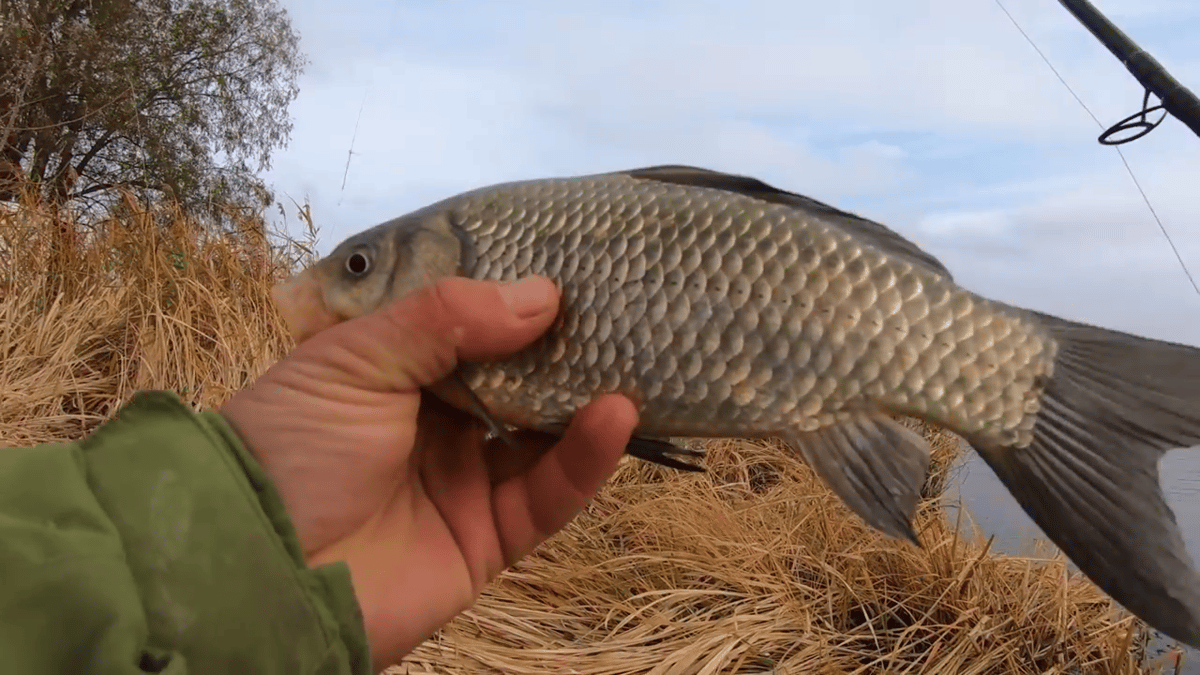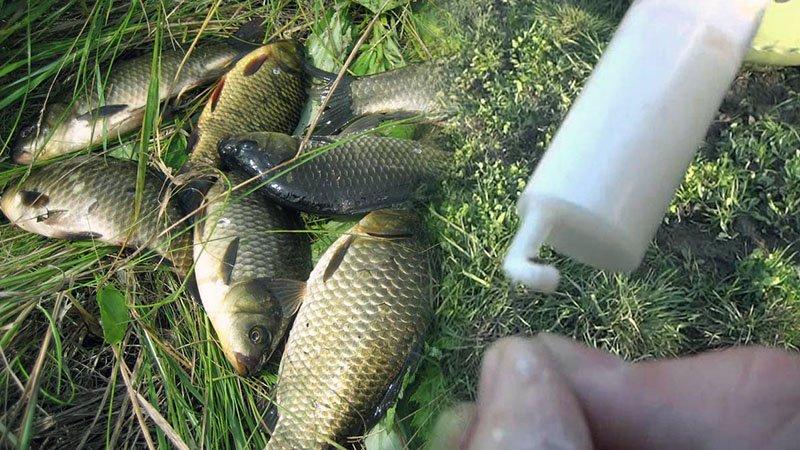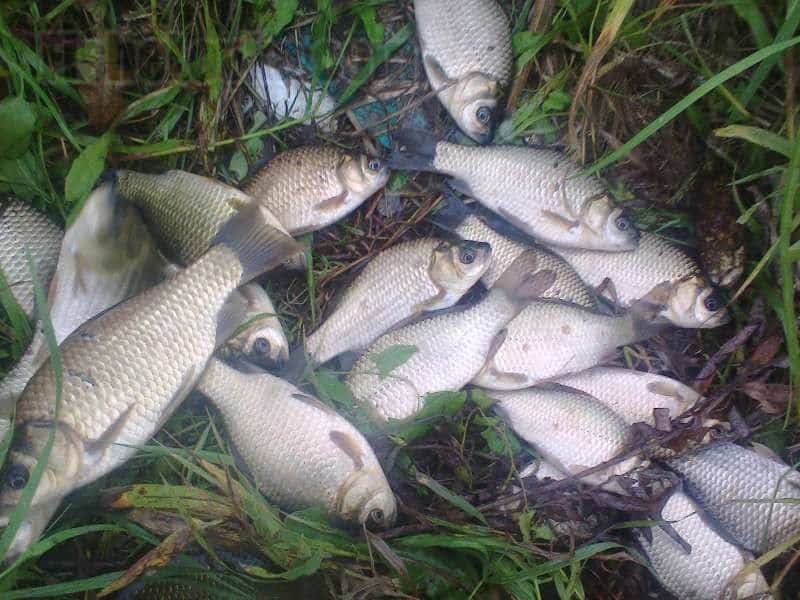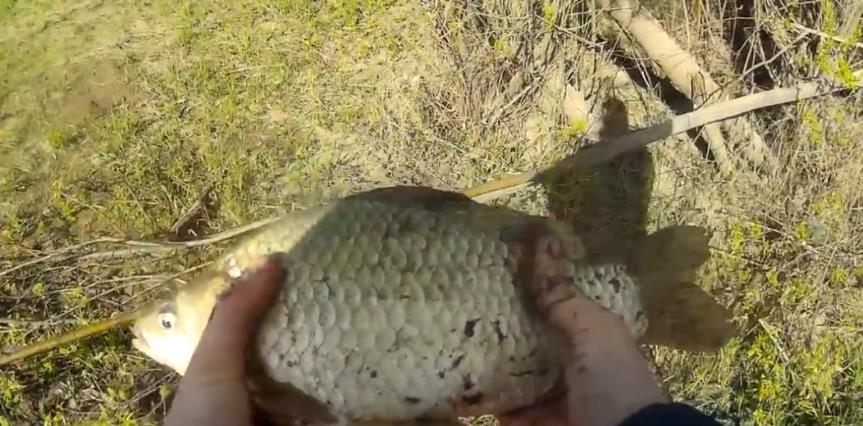Crucian carp is considered a folk fish that can be found in almost any body of water. It is a prolific and viable fish. Even in a completely frozen shallow pond, it will survive by burying itself in a layer of bottom silt.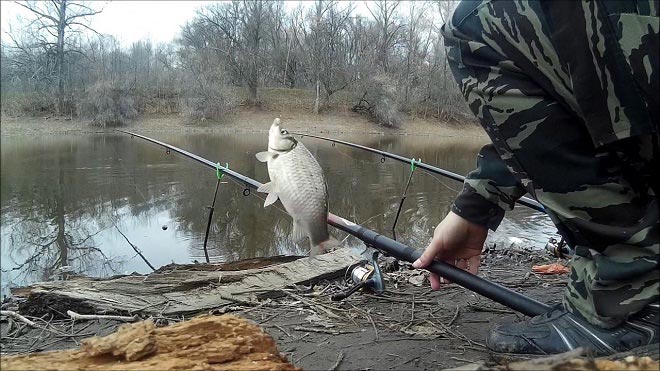
Where is crucian carp found in spring
With the arrival of spring heat, the inhabitants of reservoirs come out of hibernation. But while they still prefer to stay close to wintering pits, this period falls in March-April and the
crucian carp is just beginning to be active . With the warming up of the water column in May, the
activity of the crucian carp increases , and the feeding grounds expand. The area of interest includes shallow water heated by the sun. Coastal thickets and overhanging branches from which bugs and spiders fall to the surface of rivers and ponds. Crucian carp, huddling in flocks, begins to circle around the reservoir, following the food supply. It can often be found on shoals, spits.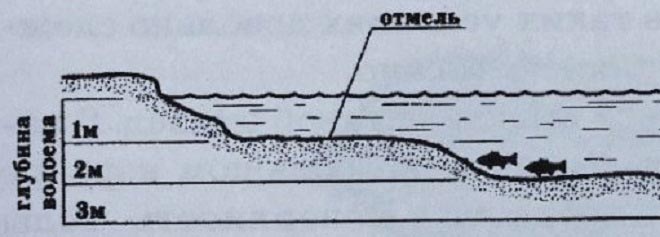
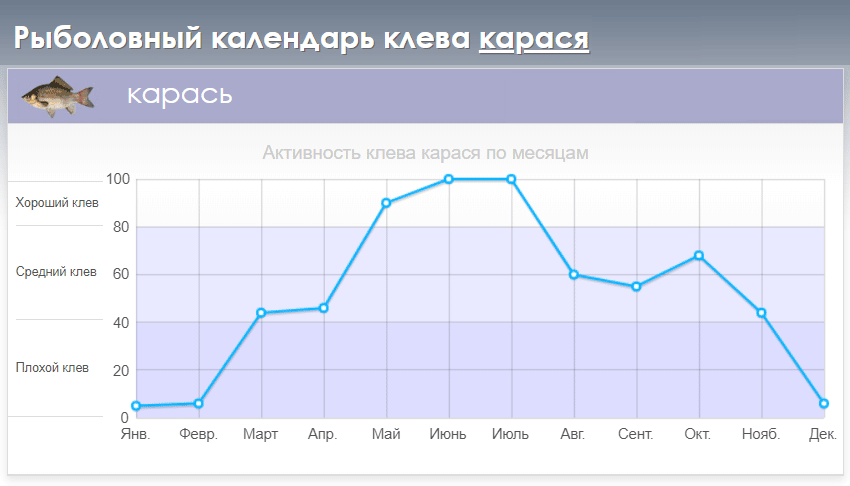
Features of spring feeder bait
A seemingly simple task – to feed the crucian carp, has its own nuances when fishing in a pond. Fishermen distinguish between crucian carp reservoirs, in which the amount of “golden” crucian carp exceeds the population of other species. And the usual, where “bast shoes” do not dominate. In the second case, the composition of the bait is important. Should not be attractive to neighbors “at the table”. The basis of
bait when fishing for crucian carp on a feeder in late spring (April-May) is made up of various cereals: pea, steamed
pearl barley , steamed millet; when fishing in early spring (April), you need to add animal components to complementary foods –
bloodworm , worm,
maggot .
Interesting. The added drinking yoghurt does not lure other underwater inhabitants and makes the crucian carp appetite.
In early spring, it is recommended to mix animal components: bloodworms, maggots and worms. At this time, the crucian carp is “fattening up”.
It is important not to overfeed the crucian carp. Otherwise, he, having eaten, will lose interest in bait.
When fishing for crucian carp on a feeder in the current, creating a feeding area, the balls should be sticky. So that they do not immediately crumble when hitting the water, but gradually washed out. Good “adhesion” is given by clay, earth from molehills.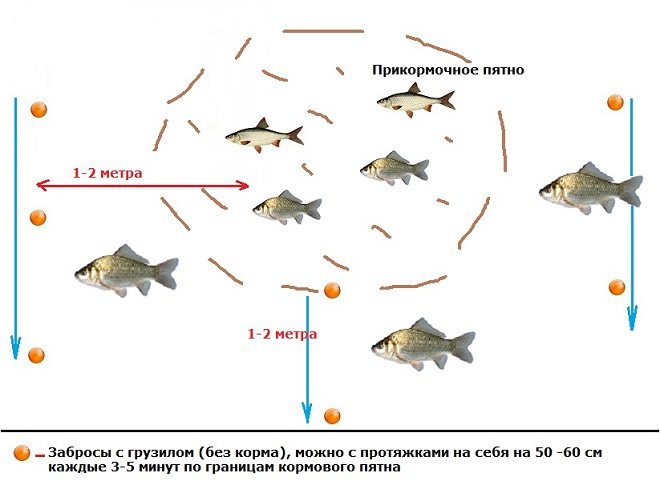
Used baits and baits
The protein component is preferable at the time of the emergence from hibernation of the inhabitants of reservoirs, for catching crucian carp they use:
- earth and dung worm;
- maggot and bloodworms (in the “crucian” ponds);
- pieces of crawls;
- caddis flies.
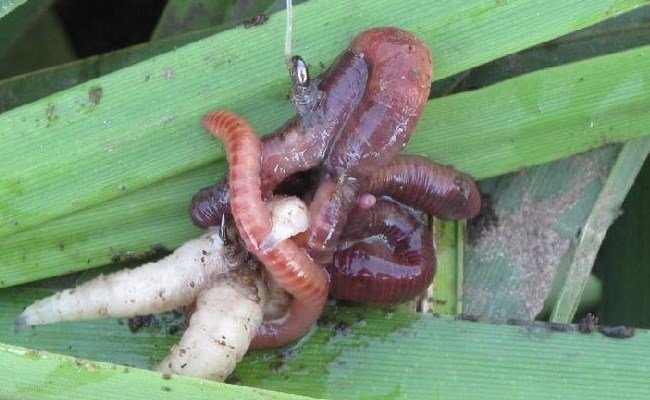
When the crucian carp tastes the first greens (usually this is May), then vegetable baits are recommended:
- peas;
- boiled barley;
- bread crumb;
- cake.
The aromas are sweet smells: garlic, cocoa, raspberries, anise. When rolling dough, bread crumbs, you can first smear your hands with Vietnamese “Star”. “Golden” crucian carp is active when the water warms up to 10-12 degrees.
They catch crucian carp in spring time using different tackle: a
classic float , a Bologna fishing rod, and even a spinning rod. Feeder fishing, as an advanced type of bottom tackle, is also relevant. Having calculated the routes of movement of carp, forage traps are created.
Collection of feeder tackle for catching spring carp
The features of the reservoir and the behavior of its inhabitants are taken into account. It is recommended to fish inactive crucian carp with balanced, delicate rigs, thin lines and small hooks. Further, as the fish are interested, they switch to self-locking assemblies with durable cords and leashes.
Rod
A fishing rod with a length of 2.7-3.6 meters is chosen depending on the fishing conditions: the presence of a current, casting distance, the location of coastal and coastal vegetation. The test blank varies between 30-80 gr. Large guides, removable quivertips are recommended. The rod structure should show good information content in still water and on the current.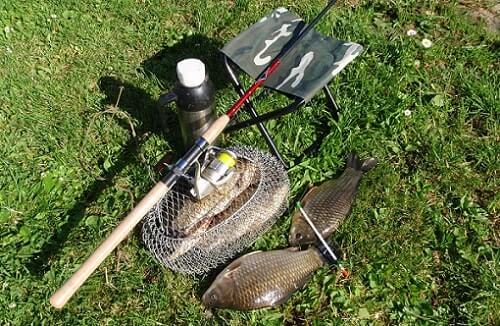
Coil
As a rule, when fishing with feeder tackle, the reel is taken in size from 2000-2500 with low sides for unhindered fishing line. Transfer mechanism with a value not higher than 1: 4. With the ability to get prey and a feeder. Recommended number of bearings 4-6, highly adjustable friction brake. For beginner feeders, equipment with a baitrunner is desirable.
Fishing line
Braid is preferable for the following reasons:
- low stretch, sensitive to bites;
- thin and durable, less “sail” in the underwater stream.
Diameter: 0.14-0.18 mm.
Feeder collection feeder
It is selected with a weight in the region of 40-60 grams. Early spring fishing for crucian carp with a feeder involves casting in shallow water, therefore feeders are used of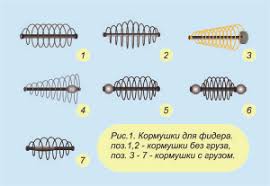
- Symmetrical loop . It is made with a diameter of 25-30 cm from a monofilament with a thickness of 0.25-0.27 mm. In this case, the feeder moves freely along the string. The disadvantage of the rig is the possibility of overlap with the leash.
- Asymmetrical buttonhole . The same material and dimensions of the cord, but the leash is distanced from the main loop with a braided “pigtail”. This design minimizes overlaps.
- Rig Gardner (Paternoster) . It is considered a classic in feeder fishing. Installation involves the location of the leash above the feed. Convenient when casting to a muddy bottom, when the “table” is submerged, and the bait is located higher.
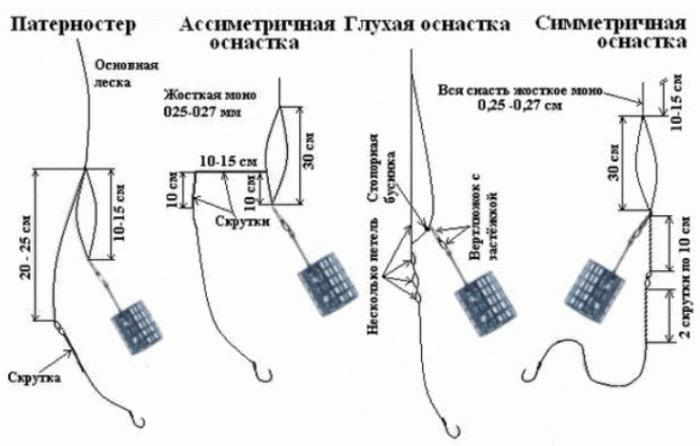
- Open . The lower and upper parts are not equipped with baffles. When hitting the bottom, the bait quickly spreads. They are used to create a feeding area and in stagnant water.
- Semi-closed . The lower end is perforated, which leads to gradual washout of the composition in the underwater stream and the formation of a stern plume.

- “Springs” Made in the form of a spiral. Light in weight, they are used when fishing in ponds, lakes and reservoirs with a weak current.
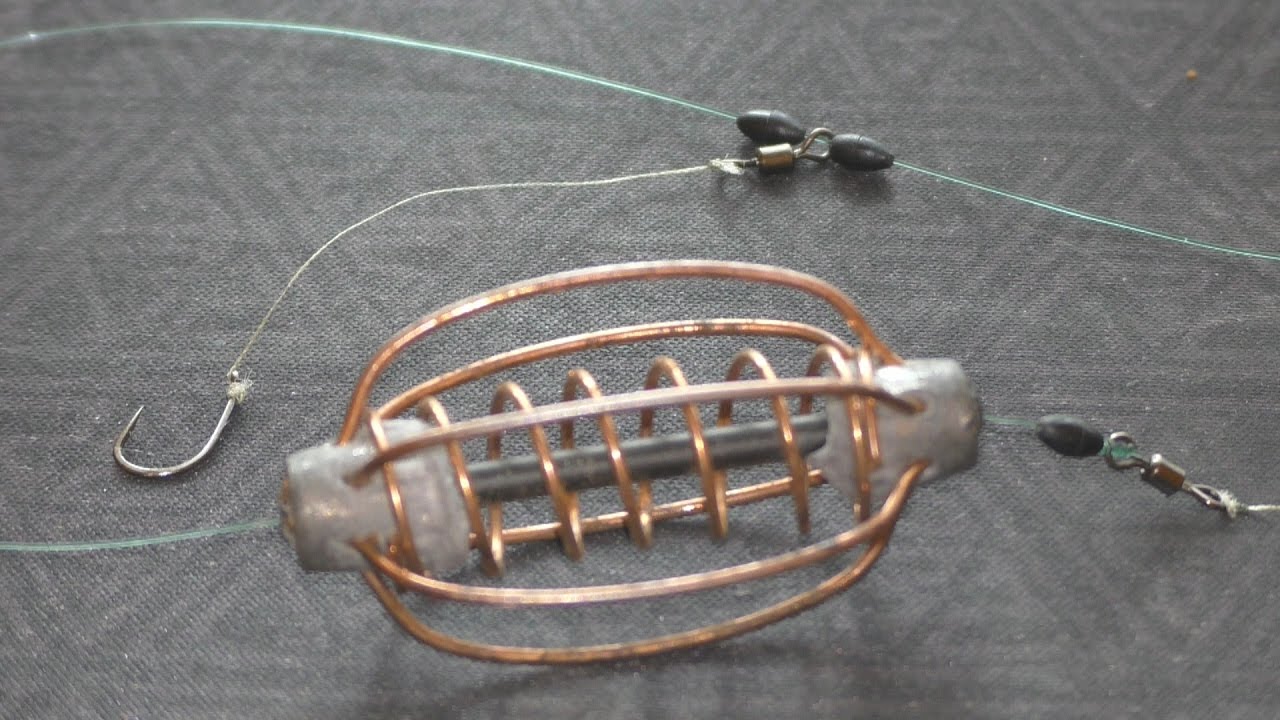
Leash
Designed to keep the main line from losing all rigging.
Interesting. Crucian carp is a cautious fish, so this feature is taken into account when choosing a leash. The more fearful the prey, the longer the bend.
Optimal for feeder fishing is considered to be a segment of 50-60 cm of monofilament with a thickness of 0.14-0.16 mm.
Hooks
They are selected depending on the bait or bait:
- No. 14-8 for vegetation (peas, pearl barley, corn, bread crumb);
- No. 10-6 with a long or medium forearm for an earthworm;
- No. 14-10 are suitable for maggots;
- No. 16-14 the bloodworm is put on.
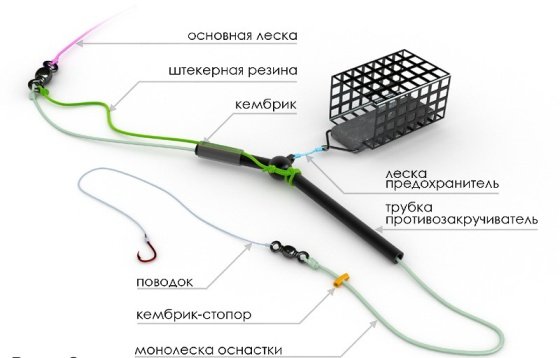
Tactics for catching crucian carp on a feeder in spring
Having chosen the place of fishing, they begin to survey the bottom by the “tapping” method. For this purpose, a
marker weight is used that is identical in weight to the filled trough. The cast is performed in front of you (angle 0 degrees) to the maximum possible distance. After the load reaches the bottom, drag the marker 1.5-2 meters with the rod, bringing the tip of the blank at an angle of 45-90 degrees from the initial one, observing the horizontal plane. They observe the tip and listen to the sensations “in the hand”:
- tapping indicates a rocky area;
- a tight move is possible on clay, silt;
- even stretching – sand.
After pulling and winding the line, a sharp vertical jerk is made with the rod. The weight in the water is thrown up (without leaving the surface) and counting begins. Ends when the bottom marker is reached. Then the next penetration, etc. This is how the depth measurement is performed.
Important. The countdown should be the same every time. Experienced fishermen use the fastest, in which there are no pauses.
By changing the place of casting and the distance, the topography and structure of the bottom is determined. The catch point is outlined. It is convenient to “fix” the direction according to the landmark on the opposite side. A feeding zone is preliminarily created, for this 10-15 times the bait is sent to the selected place.

